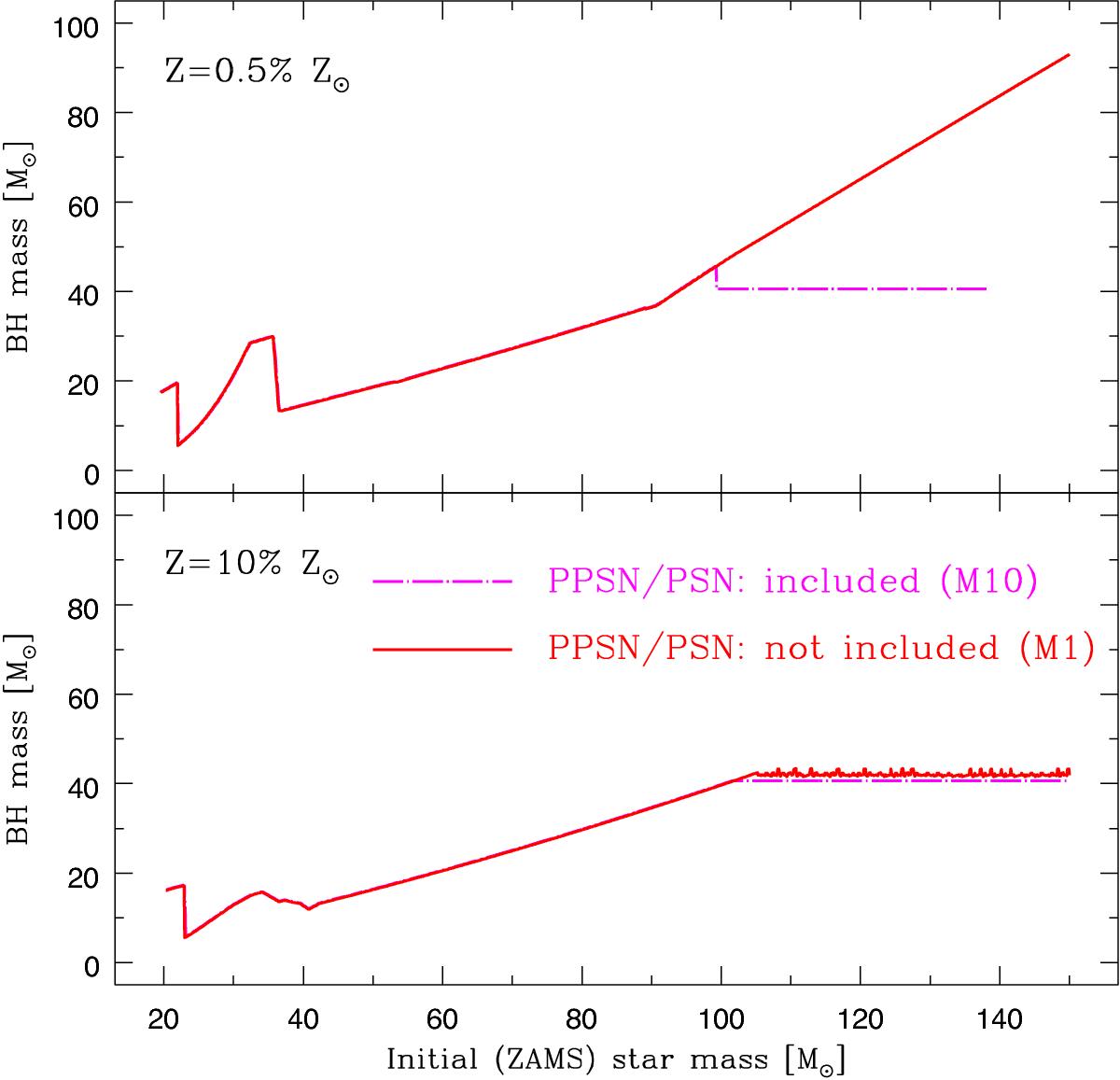Fig. 2

Initial-final mass relation for single stars. Models with (M10) and without (M1) pair-instability pulsation supernovae and pair-instability supernovae are shown. Bottom panel: at high metallicity (Z = 10% Z⊙ and higher) the models are indistinguishable. For the border-line metallicity of Z = 10% Z⊙, stars with very high initial mass (Mzams> 100 M⊙) will form slightly lighter BHs (by ~ 2 M⊙) if pair-instability pulsation supernovae are included. Top panel: at low metallicity (e.g., Z = 0.5% Z⊙) pair-instability pulsation supernovae and pair-instability supernovae do not allow for high mass BH formation; maximum BH mass is MBH = 45 M⊙. For the very low metallicity of Z = 0.5% Z⊙, very massive stars (Mzams ≈ 100−140 M⊙) lose significant mass in pair-instability pulsation supernovae reducing the BH mass to MBH ≈ 40 M⊙, while the most massive stars (Mzams> 140 M⊙) explode in pair-instability supernovae leaving no remnant.
Current usage metrics show cumulative count of Article Views (full-text article views including HTML views, PDF and ePub downloads, according to the available data) and Abstracts Views on Vision4Press platform.
Data correspond to usage on the plateform after 2015. The current usage metrics is available 48-96 hours after online publication and is updated daily on week days.
Initial download of the metrics may take a while.


